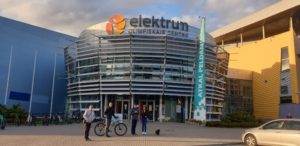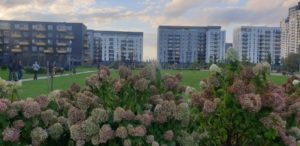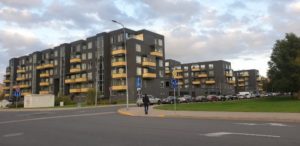National energy and climate framework calls Riga for developing a climate neutral city
In the beginning of 2020, the Latvian government adopted two major energy and climate planning documents, setting ambitious long-term goals for energy transition until 2030 and 2050.
According to Eurostat, Latvia is the third EU country in terms of the share of renewable energy (40.3%) in the gross energy consumption, following Sweden and Finland. At the same time, over 50% of electricity is produced from renewable energy sources in Latvia, placing it fourth in the EU in this particular category. Although Latvia is among the EU leaders in the use of renewable energy sources, achieving long-term goals is a challenge, partly due to the specificity of its energy sector and need to adapt other sectors of the economy.
To respond to this challenge, Latvian government approved the country’s Strategy for Achieving Climate Neutrality 2050, aimed to balance climate change mitigation and adaptation strategies with strategies aimed to increase the economic performance of the Latvian economy and competitiveness. Two basic approaches are planned to achieve climate neutrality: 1) technological solutions and 2) lifestyle changes.
This strategy was followed by the approval of Latvia’s national energy and climate plan 2021-2030, also primarily focusing on the development of a sustainable, competitive and climate neutral economy. To attain this long-term goal, the plan proposes ensuring an effective use of resources, as well as their self-sufficiency and diversity. This plan also calls for cutting consumption of resources, especially fossil and unsustainable ones, switching instead to sustainable, renewable and innovative resources. Moreover, it envisages stimulating research and innovation, facilitating the energy sector’s development and curbing climate change.
Riga city, being home to about a third of Latvia’s population and representing over 60% of Latvia’s economy, must take a leading role in implementing national climate and energy policies. As part of the ATELIER project implementation, Riga has undertaken the elaboration of the “Bold City Vision 2050” – the long-term strategic vision for the transformation and decarbonisation of the Riga city energy system – ambitious, but at the same time a realistic energy planning vision for the city. Based on a comprehensive analysis of the baseline and evaluation of the results of the current “Riga Smart City Sustainable Energy Action Plan for a 2014-2020” (SEAP-2020), long-term energy transition goals will be set, which in turn will be the basis for updating the existing SEAP-2020 to “Riga Sustainable Energy and Climate Action Plan until 2030” (SECAP-2030).
Clearly, in Riga, achieving climate neutrality requires cross-sectoral cooperation. This applies to many areas, including increased energy efficiency, clean and sustainable mobility, circularity in all sectors of economy, and other. Achieving these long-term goals requires complementary implementation of measures in individual sectors (improving buildings’ energy efficiency, promoting the use of energy saving and renewable energy technologies in the supply of heating and air conditioning, thermo-modernisation in construction, electromobility in transport, etc.). In the ATELIER project, all these aspects are integrated into the Positive Energy Districts (PED) concept, the development of which has also started in Riga.
Moreover, in October 2020, the new term of the Riga City Council began to work, declaring climate-smart urban development and achieving climate neutrality goals as their key strategic priorities.






ATELIER pilot site in Riga – Skanste neighbourhood (Credits: Aija Zučika, ATELIER project expert, Nika Kotoviča, ATELIER project coordinator)
